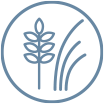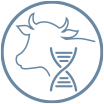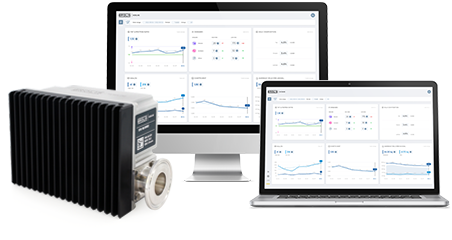Ketosis in cows: Causes, Symptoms, Treatment and Prevention
Ketosis in cattle is the most common metabolic disorder in modern dairy farms. Due to its frequent occurrence, it is better described as a condition of modern productive cows than a disease. Ketosis, especially its subclinical form, occurs as a consequence of a negative energy balance during intensive lactation after calving.
Causes of ketosis
Symptoms and types of ketosis in dairy cattle
Ketosis is described as clinical or subclinical based on whether clinical symptoms are present or absent.
In clinical ketosis, the smell of acetone permeates into the air emitted in the barn, sick animals eat worse, milk production decreases as its consistency changes and pH increases. In the typical form, sick cows will present signs such as licking of the skin, sudden weight loss and sluggishness, while a slight arching of the back may be observed. As the disease progresses, nervous phenomena can occur, such as: walking in a circle, crossing of the legs, supporting of the head on a pole or wall, temporary blindness, uncharacteristic uncoordinated movements, and salivation with chewing movements.
Losses incurred
This metabolic disease causes significant economic losses due to the effect on milk yield for the rest of lactation, along with adverse effects on reproduction and the immune system. Cattle suffering from the subclinical form eat up to 20% less dry matter and give ~2-3 kg less milk per day. It has been established that in very high productivity herds, up to 50 percent of cows may suffer from subclinical ketosis, and 20-30 percent of these cases will progress to the form of clinical ketosis.
Subclinical ketosis has a direct impact on fertilisation (cows have to be inseminated more than 3 times), as it leads to early failure of fresh milk cows due to weight loss, endometritis, and lower productivity. Indirectly, latent ketosis affects mastitis, lameness.
How to detect ketosis in cows?
Laboratory blood tests
An increase in the concentration of hydroxybutyrate in the blood >1.2 μmol/l is considered a diagnostic standard for ketosis. If, along with the blood tests performed, we also see clinical signs – the disease is characterised as clinical ketosis, and if they are absent – subclinical.
Cows lose a lot of weight after calving, milk production decreases, and they are more likely to have constipation. Calves of cows with ketosis have been shown to be more susceptible to infection. The more intense the clinical ketosis is, the more often the cows suffer from mastitis, endometritis, and the reproductive cycle is disturbed. Quite often, displaced abomasum is found together with this disease. At the same stage of lactation, the risk of fatty liver increases.
Hypoglycemia, ketonemia, ketonuria are characteristic signs of this disease. Decreased blood glucose levels (20-40 mg/dl) can be one of the symptoms of ketosis. It is most appropriate to study the levels of ketone bodies (especially BHB) in the blood or other body fluids, as the increase in their concentration most accurately reflects the progression of the disease. Laboratory tests are an accurate and effective way to diagnose ketosis, although these are not always practical and quick as qualified personnel and special equipment are required to conduct the tests. It is important to properly take, prepare and send samples to the laboratory, and then evaluate the results obtained with the help of specialists. All this requires additional costs and time, while the animals are stressed during veterinary procedures.
Rapid tests
As an alternative to laboratory tests, rapid tests and mobile meters have been developed to detect ketone bodies in milk. These tests are simple, quick and inexpensive. However, it is not always practical, especially on large farms, when it is necessary to examine multiple cows. Additional qualified personnel are needed to carry out such tests and make appropriate decisions in a timely manner.
Diagnosis of ketosis with BROLIS HerdLine
The in-line milk analyzer BROLIS HerdLine is like a small laboratory on your dairy farm. The analyzer examines the composition of each cow’s milk during each milking. It is installed in milking stalls or milking robots in the milk line and does not use additional reagents or samples.
Analysis of changes in protein, fat and other indicators of milk can highlight the first signs of ketosis in time. Since this data is collected constantly, it becomes one of the most reliable ways to diagnose the disease.
BROLIS HerdLine ketosis diagnostic guidelines:
- 2-4 weeks before ketosis, a decrease in milk production is noticeable.
- The amount and ratio of milk components (protein, fat, lactose) changes.
- The ratio of fat to protein in healthy cow milk should be ~1.2. As the milk fat-protein ratio approaches the 1.3-1.5 limit, we may suspect subclinical ketosis, and if the 1.5 limit is exceeded and symptoms of the disease appear – clinical ketosis.
Early diagnosis of subclinical ketosis can be limited to easy and simple treatment – prophylaxis, increasing the body’s supply of energy substances. As the disease progresses and passes into the clinical form, the treatment may last 2-5 days. Complications may require more serious treatment with anti-inflammatory drugs or antibiotics. In such a case, the milk cannot be sold to buyers depending on the preparations used and the requirements for the withdrawal period for milk applied to them.
Treatment of ketosis in dairy cattle
Depending on the established severity of the disease and the causative agent, the veterinarian prescribes treatment. But it is worth paying attention to general tips:
- Weaned cows should be fed high-fibre and properly prepared roughage to stimulate rumen activity and maintain rumen volume.
- Use glucoplastic substances (sodium propionate, propylene glycol, glycerol, monensin) and other veterinary means and feed additives to restore energy needs of cows faster in case of illness.
Prevention of ketosis in cows
In order to avoid ketosis and maintain good milk quality, comprehensive prevention is very important:
- Ensure optimal condition of the cattle body. A body condition score of 3.0-3.5 at calving is considered to be ideal.
- A couple of weeks before calving, introduce concentrated feed into the diet in small quantities, increasing their energy value.
- At the beginning of lactation, change the diet gradually, and avoid poor quality feed. Do not suddenly increase the amount of concentrates.
- Pay more attention to cows in the first month after calving. Paresis, metritis, retained placenta and other factors increase the risk of ketosis and can significantly affect the efficiency of the rest of the lactation.
- In loose housing systems, it is recommended to form a separate group of fresh milk cows for easy monitoring and control of the animals. Good housing conditions must be provided so that the cows experience as little stress as possible.
- Periodically perform blood, milk, urine tests for ketone bodies and other indicators.
- Monitor and analyse changes in milk parameters with BROLIS HerdLine, especially in the first months of lactation. An in-line milk analyzer may provide a lot of useful information about the state of the udder in cows. The presented data on changes in the composition of milk and other indicators during milking make it possible to quickly and efficiently identify animals the bodies of which are undergoing changes that are not characteristic of a healthy organism. By assessing the values of milk protein, fat, lactose, and other indicators obtained during each milking, the system immediately provides data on cows in the risk group of ketosis. This provides the opportunity to make timely and quick decisions and prevent the progression of the disease.







